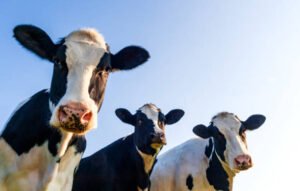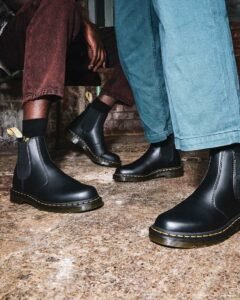Is vegan leather the opposite of ethical?

Is too much vegan bad for the planet? Can we reduce the carbon footprint if too many vegan products are made from plastic? These are questions that have been raised about the emerging market for vegan leather and alternative clothing. Whilst vegan is certainly a cruelty-free choice, is it too bad for the environment? Or are there any alternatives we can buy to avoid animal-based clothing and carbon emissions?
Can some vegan leathers be ethical?
Some vegan leathers can be made from plants. Such as pineapple leaves and other fruit peels.
Other brands may use recycled plastics to create their leather-like products.
Vegan leather is important for many people, as they do not want to contribute to products made from animals or have them in their homes. This is a very reasonable choice. However, is this a topic that can result in a lot of confusion? From the perspective of wanting to lower emissions, it can be difficult to decide whether to invest in real leather or keep it vegan.
So when do vegan leather products become “unethical”? From looking through Peta and their breakdown of vegan leathers, we see that some are created using plastic. There are two kinds of plastic used for vegan leather products: one being polyurethane and the other, polyvinyl chloride.

What are polyurethane and polyvinyl chloride?
- Polyurethane is plastic that is used for many things. It is a flexible plastic that can be used to make fake leather.
- Polyvinyl Chloride is another plastic that can be used for various things. Something that surprised me whilst looking at the material was that it does not produce a high amount of carbon emissions. Polyvinyl Chloride is long-lasting (as plastic is).
This makes me wonder whether this method of creating vegan leather is not as bad for the environment as we think it is. As stated above, Polyvinyl Chloride is long-lasting and does not produce the high amount of emissions some think it does.
Speaking from personal experience, I myself own a pair of vegan leather Dr Martens, which I have owned for roughly three years, and they are still good as new – despite being worn so many times. This is what came to my mind as soon as I read up on Polyvinyl Chloride. Could buying vegan shoes be the best choice? It’s not an easy decision if you don’t want to buy non-vegan, yet don’t want to buy something that negatively affects the environment.
This difficult decision could push people to be more conscious of what the leather is made from. If you want to buy vegan leather, you can easily check what the vegan item is made from, keeping in mind that some are made from recycled plastic or plant-based products.
Obviously, this is a complicated subject; even though polyvinyl chloride is a low emission material, plastic is still produced at the end of the day. As it is a complex subject, it is the consumer’s choice to decide the best option for them. One option may be better than the other for different people’s individual reasons.
The vegan leather is cruelty-free for animals, whilst the use of real leather lessens the production of plastic. Yet, I still want to question the production of real leather.

Photo Credit: Dr Martens
As animal agriculture is a major contributor to greenhouse gas emissions (in Ireland, animal agriculture caused 35.3% of gas emissions in 2019), is the production of genuine leather just as bad as plastic production?
There are different forms of emissions that can be released by tanneries and their processes. However, this production is still not innocent if their emissions are low, as their products are still not cruelty-free. There are factors to consider on both sides of this conversation. One thing to consider is that there are many added chemicals in the process of tanning:
“Tanning is essentially the reaction of collagen fibers in the hide with tannins, chromium, alum, or other chemical agents. The most common tanning agents used in the U. S. are trivalent chromium and vegetable tannins extracted from specific tree barks. Alum, syntans (man-made chemicals), formaldehyde, glutaraldehyde, and heavy oils are other tanning agents.”
If there are so many chemicals used in the process of tanning, isn’t this a threat to the environment?
Something that can be done alternatively is buying a vintage, second-hand piece. Therefore, as an individual, you can keep away from newly produced items that are potentially made from plastic, whilst not contributing to brands that use animal products. Would this method of consumerism be a win-win? Buying pre-loved clothing is a way of dodging industries that you are unsure of, but gives you the opportunity to shop at a more affordable price.
The environmental side of this conversation is certainly up for interpretation as it can be confusing to look at all these different factors. However, there are always options and alternatives. Saying that, a bit of research can go a long way if you are on the hunt for vegan shoes or a jacket, but want to keep it eco-friendly as well as cruelty-free. There are so many sources that have looked into brands and compiled lists of sustainable, vegan footwear. If you know some more, please share them in the comments!